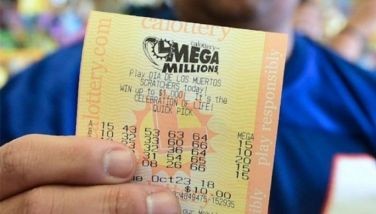5,000! What now?
More than a year ago, we made a forecast that the index would reach 5,000. At the start of the year 2011, when the index was at 4,215, we had an index target of 5,000. Now that the index has reached 5,000, many investors have asked us whether they should now take profit. With the stock market currently undergoing a correction, one of the most frequent questions being asked by clients is whether they should sell their position now.
For the past nine trading days, the Philippine Stock Exchange index (PSEi) has managed to close above the 5,000-point mark. Three weeks ago, we wrote about how the PSEi breached this level for the first time ever (see 5000, 5 March 2012). The PSEi reaching 5,000 and the subsequent headlines in Philippine news dailies have led to more queries from new investors. The question most often asked is whether they should invest in the stock market now that it has reached the 5,000 milestone. With the many questions that we are getting about the market, we believe that it is about time that we do another Q&A article.
Should we sell now?
It depends on one’s time horizon. For short term traders, there is absolutely nothing wrong with taking profit. But we have always advocated selling the trading position and maintaining a core holding. We have also encouraged investing for the long term.
Should we sell now and buy back later?
It is very hard to time when the next dip will occur. If one sells now, one may have difficulty buying back his stocks at prices lower than what he sold them for. Again, if one is nimble enough and able to watch the market on a daily basis, then there is no harm in buying and selling. But then again, there is a risk that one is left behind in this bull run. We have always preached that the big money is made in holding good companies with the right business model for the long term rather than in short term trading.
Is it a good time to invest new money now?
Philippines stocks are in a bull market now. Although corrections can and will occur, if you have a long term view, the uptrend remains intact.
The market is correcting. How deep is this correction?
Not only were we asked when the next correction will happen, but we were also asked to estimate how deep it will be. It is in anticipating corrections that the most mistakes are made, both by beginners and professionals. We prefer to determine the trend and trade it accordingly since any negative event can cause a correction. As we experienced last year, anything from Middle East unrest to an earthquake and even a hostage-taking can cause the market to correct.
What will be the catalysts that will bring the PSEi to higher levels?
There are a number of catalysts that can push the market higher. First is the Public-Private Partnership (PPP) program of the government for infrastructure projects. This will contribute significantly to GDP if it pushes through. In addition, infrastructure and construction companies that win the auction will benefit greatly from the increased cash flow.
Second is our country’s relatively high economic growth. With the developed world growing at one to two percent, any upward surprise in the Philippine GDP growth rate this year may trigger another leg up for the market.
Third, the rising OFW remittances, a rapidly growing BPO sector and resumption of growth in the global economy can actually lead to upward revisions in corporate earnings estimates.
Fourth is the impending credit rating upgrade of Philippine debt paper.
Fifth, global markets, led by the US, have started to move up. The upward trend in the US and other markets will continue to lift Philippine markets as well.
What are the risks to this bull market?
First is crude oil rising too much that it begins to hamper growth. Second is a possible Chinese hard landing. This is also being closely watched since a decrease in Chinese domestic consumption will crimp the growth for many developed countries. Third is the resurgence of the European sovereign debt crisis. Note that this has not been fully resolved and a relapse or a surprise default may derail the upward trend in global markets.
Why is the market rising in spite of the risks?
We think that we are still in the initial stages of the bull market as investors are still “climbing the wall of worry”. At this point, permanent impediments turn into surmountable challenges and the wall eventually just becomes a temporary stumbling block. This is reflective of investor confidence that not only can the risks can be addressed, but that the risk-reward balance has tilted significantly towards the upside.
When should I start buying more stocks?
Since we are in an uptrend, we recommend that you hold on to your positions. If one wants to add to it, we suggest that one do so on pullbacks. In many of our articles, we have been advocating a buy-on-dips strategy since it allows the trader to take a position at a lower cost than if he were price-chasing. We have also advised in our previous articles and investor briefings that when one invests in stocks that he view them as a business he wants to participate in. If one believes in the business, then one should keep his stocks for the long term.
What are the stocks that I should buy now?
We just finished our investors briefing recently. There we detailed our top picks for both local and foreign stocks. One can also consult their stockbroker and ask for their firm’s research. Wealth Securities comes up with its stock recommendations which can be seen in its website, https://www.wealthsec.net. We have also advised that one diversify his stock equity holdings. We have always believed in diversification. So, instead of buying one or two stocks, one can buy a mutual fund such as the Philequity fund. The Philequity fund is up 16.1 percent YTD and has a compounded annual return of more than 20 percent over the past 17 years.
What comes after 5,000?
While breaking 5,000 alone is not a reason to buy, good fundamentals coupled with the breaking of round numbers levels reinforces the already very bullish sentiment (see The Numbers Game, 19 March 2012). Thus, if the index falls below 5,000, people will think that stocks are cheap and that they should buy. Back when the index was at the 4,000 level, stock market pundits were predicting the index to hit 5,000. Now, with that level broken, the expectation is that the PSEi will now reach 6,000.
Why did you give out t-shirts with the number ‘5,000’ printed on them?
Other than to serve as a commemorative item for the PSEi’s momentous achievement, the shirt had one message written on the back and one message alone – stay the course. In a previous article, we harped on the idea of staying long Philippine stocks (see Staying the Course, Jan. 2, 2012). Until now, we still believe this.
So, STAY THE COURSE!
For further stock market research and to view our previous articles, please visit our online trading platform at www.wealthsec.com or call 634-5038. Our archived articles can also be viewed at www.philequity.net.
- Latest
- Trending


























